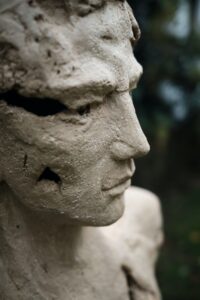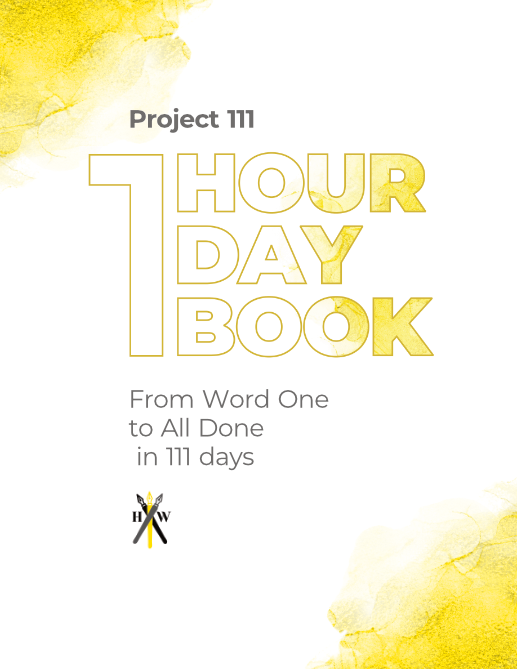If you’ve even heard the word at all, there’s a (possibly) high chance the only time you heard it used in literature was in your High School English class. If you were anything like the High School version of me, you might have taken a vocabulary quiz on literary terms. You (and I) didn’t study for it, so you chose the multiple choice option suggesting that “motif” was a character’s “motive” because they sound similar enough for that to make sense.
Now, we definitely got that wrong, and our teacher was so disappointed in us. Etymologically speaking, however, the two ideas come from the same Latin root, but we couldn’t explain that to our now metaphorical High School English teacher.
But whether that’s a shared experience between us or not, it’s important for you to know that motif does not mean motive.
A motif, when connected to literature, is a literary device which uses repetition (often as a recurring image or idea) to convey the central idea and overall theme of the work (or just include some ideas to get the audience thinking).
Novels don’t require motifs, but if you would like to get across a deeper meaning or present your readers with material they can analyze, you should definitely consider learning about motifs and including them in your writing.
We’re first going to discuss some examples of motifs and what they might mean, and we’ll end by figuring out ways to include motifs in your writing.
Table of Contents
Examples of Motifs

Let’s simplify the definition of a motif from before. A motif, simply put, is a repeated image or idea. Music has its own form of motifs, known as a leitmotif.
Most historians associate the first uses of the leitmotif with Richard Wagner. In his opera-epic Der Ring des Nibelungen, Wagner told a story with lots of characters. Perhaps out of fear that the audience couldn’t distinguishing his characters or because he wanted to combine music and story, Wagner included leitmotifs for lots of his characters.
In music, a leitmotif is a musical strain that plays when a character walks on stage (or into view of the camera). Wagner popularized (if not created) this character-music association.
Now we recognize when Vader is about to come on stage because of “The Imperial March” starts playing. We know that Jaws is about to make an appearance when the “duh-dum” horns come in. (John Williams is great at leitmotifs by the way.)
Consider now, if you please, how this can translate to literature with the standard motif. Where the leitmotif connects music with a character, the literary motif connects image or idea with meaning and theme.
That may not make complete sense yet, so let’s look at some examples.
The Great Gatsby

As mentioned in this Habit Writing article about story themes, one of the most popular motifs in Western literary history is the green light from The Great Gatsby. This recurring motif appears at various time throughout the literary work. We see it when Gatsby stands on his dock and looks out across the water.
This image sticks with us, though we may not know why, and because Fitzgerald repeats it, we subconsciously associate it with meaning. That meaning and feeling we learn is his longing.
With the basic understanding of the image in place, we can later make deeper connections between the motif and what it represents. We know its Gatsby’s longing, but what does he long for? He longs for Daisy, for wealth, for the American Dream. Analyzing the motif brings us one step closer to the overall theme of the story (or at least one reading of it): a disillusionment with the American Dream.
Let’s look at an example from a novel that came out forty years after The Great Gatsby: Frank Herbert’s Dune.
Dune

Dune features plenty of motifs and is replete with subtextual meaning and ideas.
One of the most striking motifs in Dune is the bull’s head and painting of a bullfighter that the Duke brings with him to Arrakis. Given Herbert’s fascination with philosophy, power, and politics, the bull’s head and painting are a powerful image he imbues with plenty of meaning.
This image functions in many ways, but let’s look at what the bull may symbolize in terms of power.
Bullfighting as an event mostly serves the purpose of displaying human power over the wild and dangerous natural world.
This reading of the motif has many ramifications for the planet Arrakis. We see that it could present the reader with the pride that the House Atreides has, thinking they can harness the desert power of the Fremen.
The bull’s head sets them up as conquerors, and yet it’s only once they abandon their pride and learn from the Fremen wholeheartedly that they are able to overcome House Harkonnen (whose name is derived from the Finnish word for “bull”, by the way).
This motif is one of Dune’s most successful because Herbert carefully placed it in the text but gave very little explanation as to why. The reader must rely on analysis and deeper thinking to make something of the image.
The final motif example we’ll explore is the idea of honor and heroism in The First Law trilogy.
The First Law Trilogy

(If you’re interested in learning how to write a hero, check out this Habit Writing article.)
Audiences and critics widely laud Joe Abercrombie for his ability to create complex characters with murky motivations, dark humo(u)rs, and engaging worldviews.
This trilogy deals with plenty of topics, but one that stuck out to me the most was the relationship between violence, heroism, and trauma. We see that Jezal heroizes several other characters for their valor in war, but when we read those people’s perspectives, we see that they’re haunted by their deeds.
Glokta, one of the best characters in the entire series, represents this “heroic” path better than anyone else. [I guess this might constitute a spoiler, so if you’re against minor spoilers, skip the next two paragraphs.] As a youth, Glokta fought valiantly in the army, performing exceptional feats.
Yet the character we see (and experience) does not carry the iconic appearance of a hero. The character we see sports emaciated skin, limps with excruciating pain, and sneers at any sort of happiness.
We see the heavy weight of glory and war in the crippled man. Throughout the novel, we see characters on various positions of this track, but most either fall prey to the challenges of heroism and subsequent downfall, or they see through the veneer and live their life without catering to that desire.
This motif is more of a recurring idea than image, but we do see that the idea reveals itself also as an image on occasion. This motif takes the form of physical scars and wounds. We have Logen Ninefingers with his missing finger, Jezal with his facial scar, and Glokta with his, well, his everything.
Including Motifs in Your Writing

Including motifs in your story can elevate your writing and augment the audience’s interaction with the art.
But do you need to include them at all or do they just come up as you write and give in to your creative subconscious?
I don’t think anyone will be able to fully answer this question. You can easily include motifs with a purpose, but plenty of ideas can slip through your liminal cracks and make their way into a story.
That all being said, if you’re writing your story with a theme in mind, or you want to add some texture to analyze, we highly recommend including motifs.
When deciding your motifs, you’ll want to figure out how important you want those recurring ideas and images to be. In the case of Dune and The Great Gatsby, we see purposeful images that don’t receive much authorial explanation, whereas The First Law Trilogy uses more subtle repetition to convey a theme.
When you’re deciding importance, you can look to which of these examples stands out the most to you. Do you want your readers to grapple with an image and pick apart its meaning within the context of the larger story?
Or would you rather have your ideas come across slowly over the course of the novel(s)?
There’s no right answer here!
You may also notice that the first two examples are motifs built on images, while the third one is built on ideas. If you want to have more obvious motifs, images will stand out more clearly (and rely less on constant repetition). The opposite is true of more hidden motifs.
When deciding what motifs to include, consider what you want to say with your story. Sure, that might be oversimplifying things, but it’s the best way to begin the process.
If you don’t have anything you want to say in the story beyond the story, then consider some themes your story has created. If you’ve noticed a theme, you could strengthen it by including motifs.
Now that you’ve given more thought to themes, the next step will have you shroud the idea in an object (if you go the object route). For instance, if your theme is leaving childhood, it’s helpful to have an embodiment of what childhood might look like. One common motif for childhood comes in the form of a toy.
Now that you have the toy in your story, whatever happens to the toy will support the larger theme of the story.
If you want your character to overcome childhood into adulthood, maybe they’ll abandon the toy.
If your character believes in remaining a child at heart, maybe you’ll have them take the toy with them wherever they go.
If your character experienced trauma in their coming of age, you could have the toy become somewhat destroyed and have the character take care to fix it later on, representing the healing that can occur.
Whatever your ideas may be, having a motif can greatly enhance the artistic value of your story.

Our 84-page book planner and 111 day writing course.
Conclusion

Motifs have circulated stories for plenty of years. They can add meaning to an already meaningful story, or they can become central to the reader’s understanding of an otherwise obscure section of the novel.
By looking at the images and ideas that receive multiple callouts in a novel, you can discover motifs that the author has placed in the story (either consciously or subconsciously). Finding these motifs and determining what they represent and how they support the story’s theme can facilitate a rewarding experience as a reader.
If you want to provide a similar experience to your readers, you will want to consider including motifs in your own story.
There are two main kinds of motifs: images and ideas. The image typically stands out more and begs to be analyzed. That’s the case with the green light in The Great Gatsby as well as the bull’s head and painting in Dune.
If you want to have a clear motif, try including an repeated image in your story.
If you prefer to hide your motifs a little more, consider using repeated ideas, as with the topic of heroism in The First Law Trilogy.
Whatever you decide, remember that motifs are one of the best ways to get across your story’s main theme or central idea.
For more helpful writing tricks, check out our other articles on the Habit Writing blog! Do you have a favorite motif you’ve discovered? Comment below what it might be.
gavinwride
Gavin is a fantasy author, short story enthusiast, and nature lover. When he’s not reading, writing, or exploring the outdoors, he is likely playing games. His board game collection is probably too big for someone living in a small apartment, and he has enough yet-to-be-played video games to fill a lifetime. His favorite book is "The Name of the Wind". His favorite author is Edward Abbey. His favorite game is "Dark Souls III", and he’d be more than happy to spend the day talking about lore, bosses, and game mechanics.
Our 84-page book planner and 111 day writing course.
